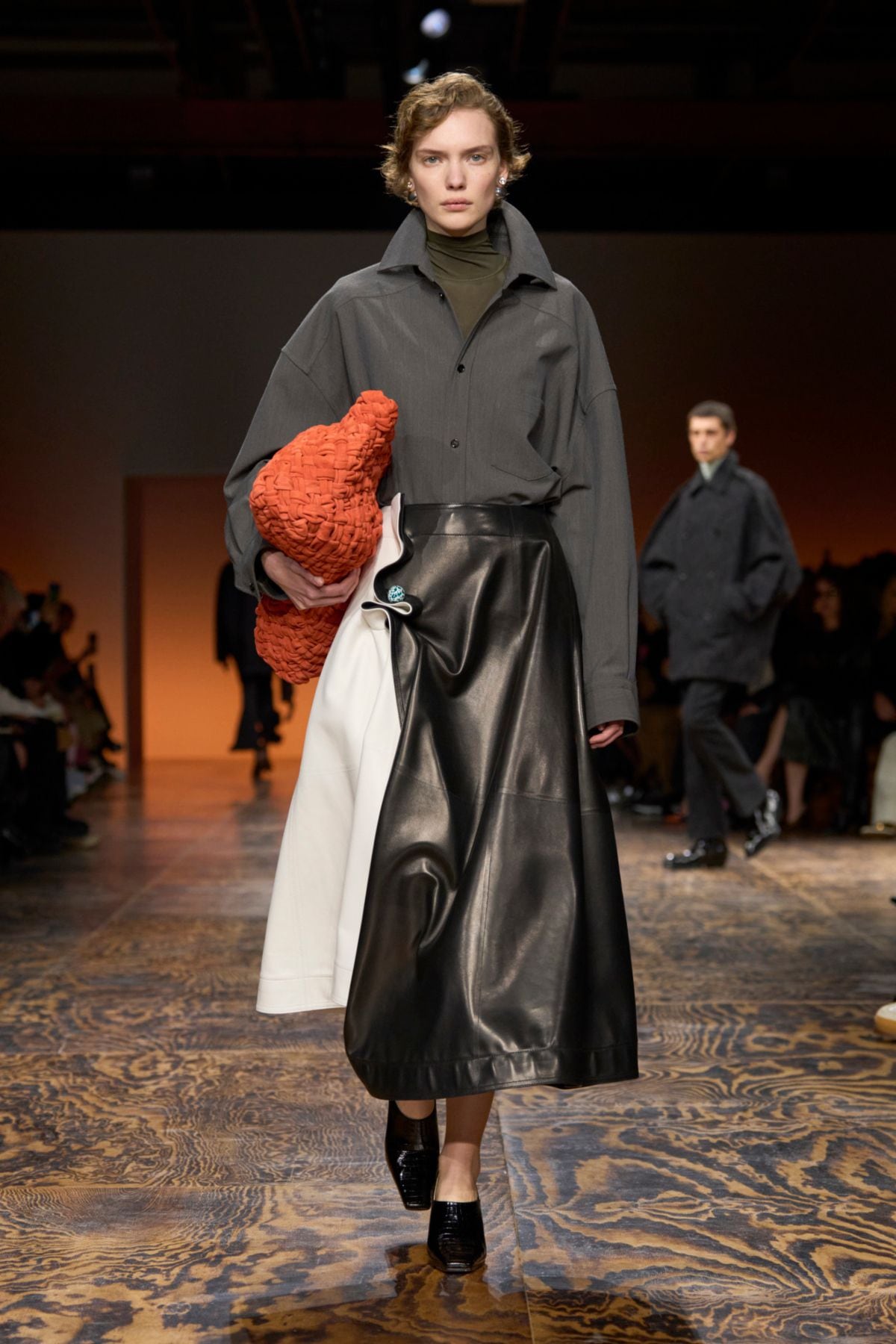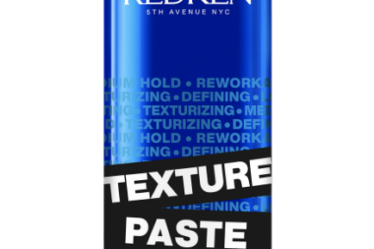
MILAN â Matthieu Blazy imagined the set of his latest presentation for Bottega Veneta as a burned landscape, with huge blooming cacti sculpted from Murano glass representing the resilience of life and beauty in a living hell.
âWhen there is nothing left, you try to make something out of yourself,â Blazy said after the show. âDressing brings us dignity, makes us human.â That veiled comment on the current state of the world inspired a huge collection that Blazy intended as an elevation of the everyday. What people do to get by. âThere was something beautiful in the idea of making it monumental.â
And yet it wasnât scale that stood out so much as directness and simplicity. In his three years at Bottega, Blazy has made a name for himself as an alchemist, spurring the brandâs remarkable ateliers on to feats of transformative ingenuity. Here, he insisted the aim was reduction. No flannel shirt made from leather this time. Nothing â or no one â pretending to be something theyâre not. Instead, cotton was cotton, leather was leather. There was no embellishment, less technique. âReduction, but to the maximum,â said Blazy. One gorgeous effect was achieved with nothing more than fabric on a dress or skirt bunched and buttoned. The plissé pleating of a pale yellow top opened into flares of sunset orange. A t-shirt dress burst phoenix-like into a ball of fiery red fringe. Outerwear was stripped of detail but it was emphatic in its silhouettes, with oversized, rounded sleeves. Blazy dropped a broad-shouldered sweater to mid-calf. That was reductio ad elegantia.
âElegance is resilience,â he insisted. His equally elegant version of a classic trench had storm flaps which anticipated a hurricane.
One particularly beautiful bias-cut dress featured a dense scribble print which was actually a composite of thousands of passport stamps. Blazy called it a âmemoryâ print. In the show, it was followed by an outfit woven with fine stripes, like the lines in a notebook. The idea of writing suggested hope for the future to the designer, âwhat can still be written.â I know he intended resilience, but it was also a reminder of whatâs been lost to the all-consuming flames. That was the constant subtext â fire, ash, carbon black â that loaned a meditative melancholy to the show. So much we know, so little we can do. And yet people continue, burned to the ground, springing back to beautiful life, stronger than ever. Blazyâs hope.
Bottega Veneta Autumn/Winter 2024
Once, you could have reasonably attached a state of meditative melancholy to Luke and Lucie Meierâs revisioning of Jil Sander, but, as Lucie said on Friday, theyâve grown bolder with the years. âCleaner and more colourful,â she added when she was asked to describe the new collection. And there was Mariacarla Boscono as proof, opening the show in a vermilion red suit with a raglan shoulder, bold, precise, definitely colourful.
Like any thinking people this season, the Meiers have been attempting to reconcile their work and the world. Luke talked about the feeling of being surrounded, immersed in something, and that was the sense they wanted to get across. Mk.gee, a musician they love, played live during the show, enveloping the audience in sound. Many of the models wore black skullcaps which encased their heads. And then the clothes themselves wrapped bodies in an over-abundance of quilted fabric, like protective blankets.
The show took place in a space described as a capsule. It underscored a sci-fi tinge in the Meiersâ work which was only stronger with their latest collection. The stately volumes, the quilted capes and full-sleeved tunics worked as the wardrobe of an intergalactic aristocracy. The metal fringing which shimmered round necklines and down side seams added a space cowboy flourish. Those odd black skullcaps suggested Vulcans, the shaggy slippers called to our inner Wookie. (The Meiers werenât the only designers in Milan to propose the Wookie foot for Winter â24.) For terrestrials, the new emphasis on sleeker tailoring held much more promise.
Jil Sander Autumn/Winter 2024
If Matthieu Blazy and the Meiers were in their own ways responding to the future, Giorgio Armani headed in the other direction, back to his roots. It wouldnât be surprising if heâs been brooding on the past. In December, his Silos exhibition space opened an exhibition dedicated to the work of Aldo Fallai, the photographer who was responsible for sealing the Armani aesthetic for posterity in the ad campaigns he shot during the seventies and eighties. Gina de Bernardo, the model who dominated those campaigns, was first on the catwalk on Monday morning.
Roots mean nature, and Armani went back to the garden with a floral-saturated show that opened in the dusky golden hour (even though it was actually morning outside) before shading into twilight and eventually darkest night. A look composed of a cargo pant in washed velvet, with a floral almost-dressing gown, a wide-brimmed embroidered hat and floral slippers had a suggestion of the eccentricity that is Armaniâs not so guilty pleasure. When the soundtrack cooed âanything you can imagineâ, you could imagine that there isnât much that hasnât crossed Armaniâs mind in his half-century in fashion. But the parade of familiar silhouettes, touchable textures and tones took on an edge of magic realism as night fell. Lustrous jewel-toned duchesse, black velvet sparkling with a swarm of dragonflies, flowers turning luminous, like deep sea creatures, can occasionally seem like incongruities in the grand scheme of sensible Armani things. But theyâre as much the man as any of the revolutionary looks that are celebrated in Aldo Fallaiâs images.


